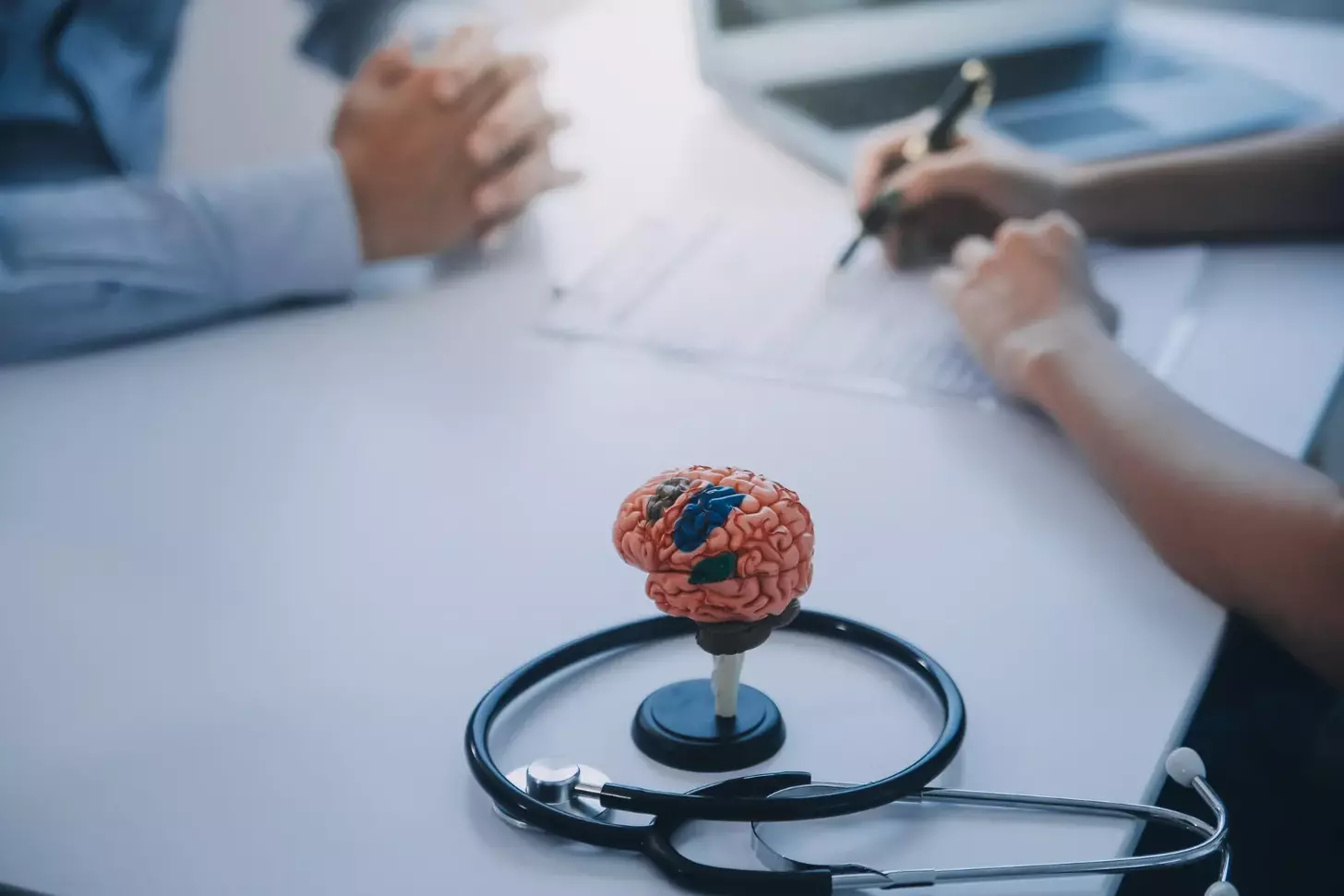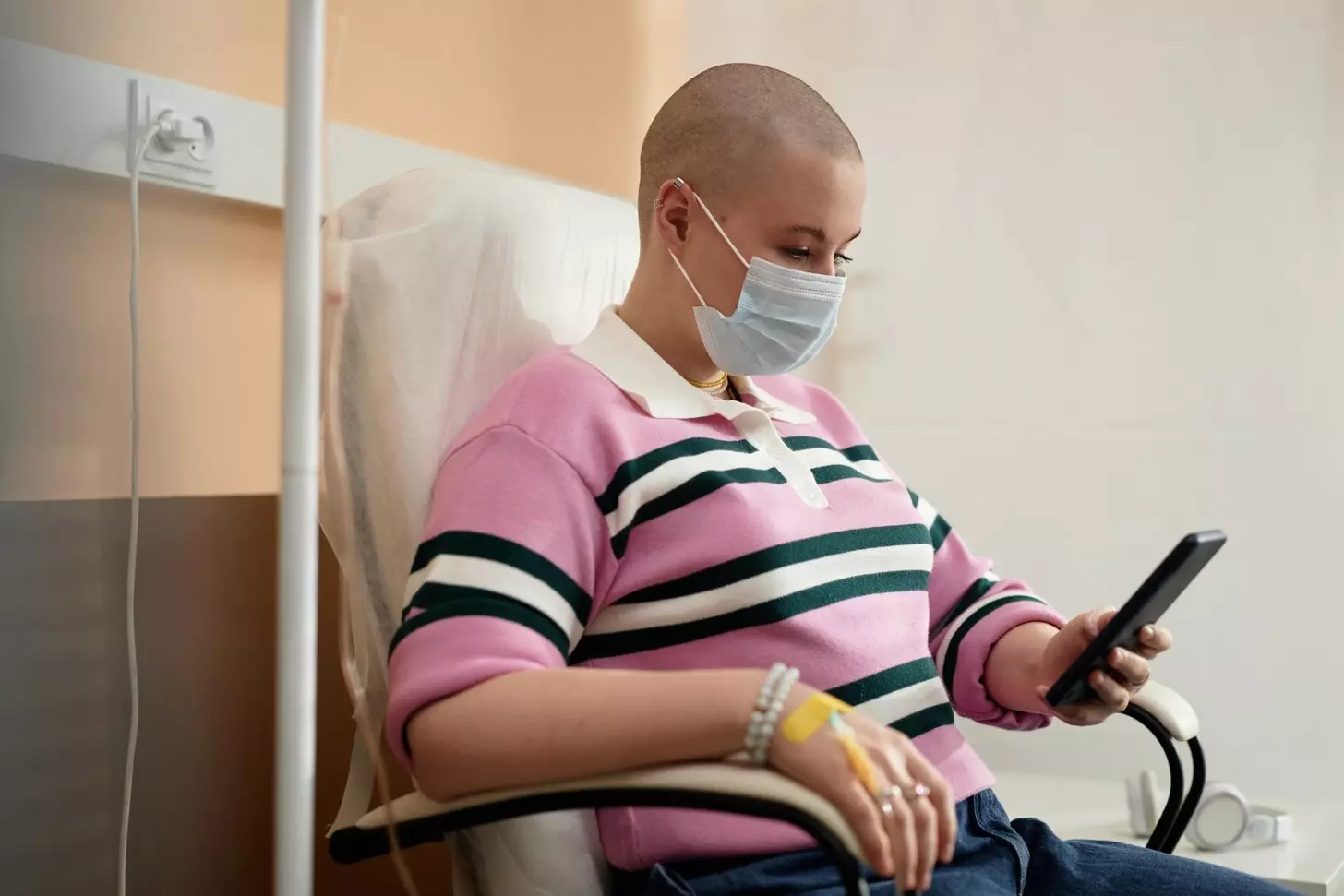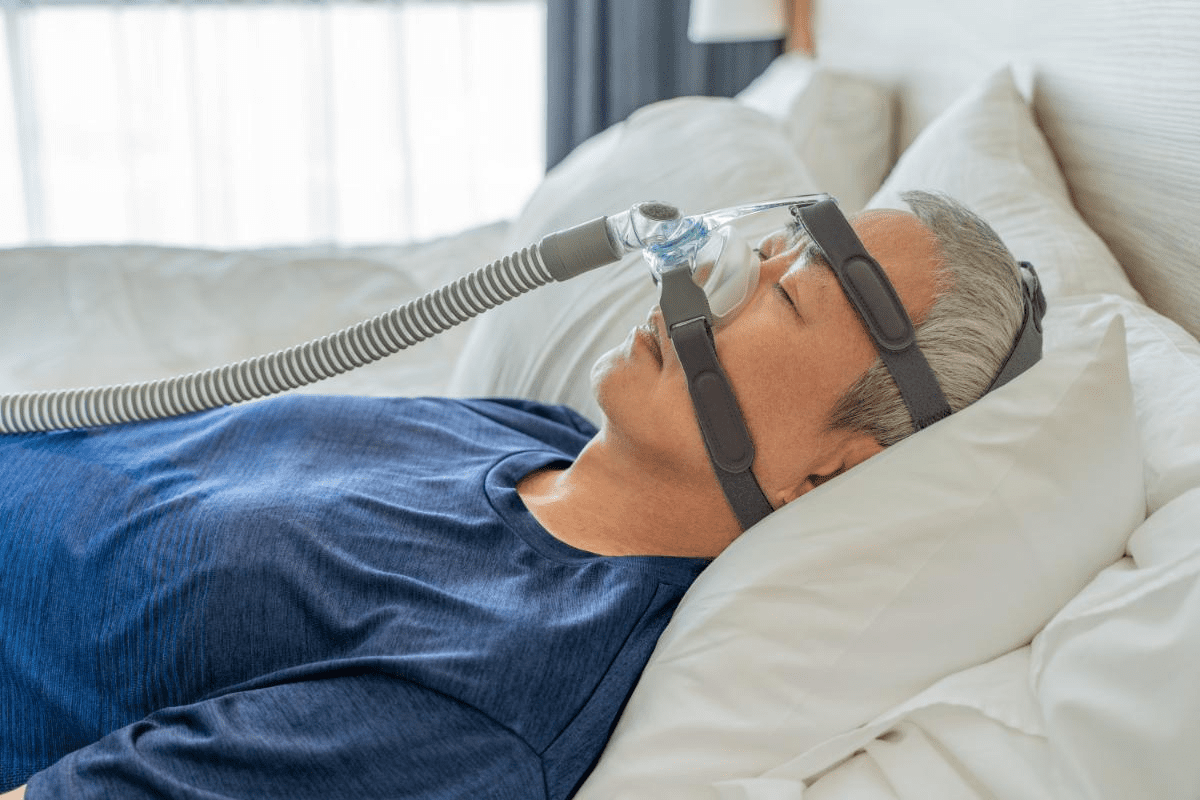Last Updated on November 27, 2025 by Bilal Hasdemir
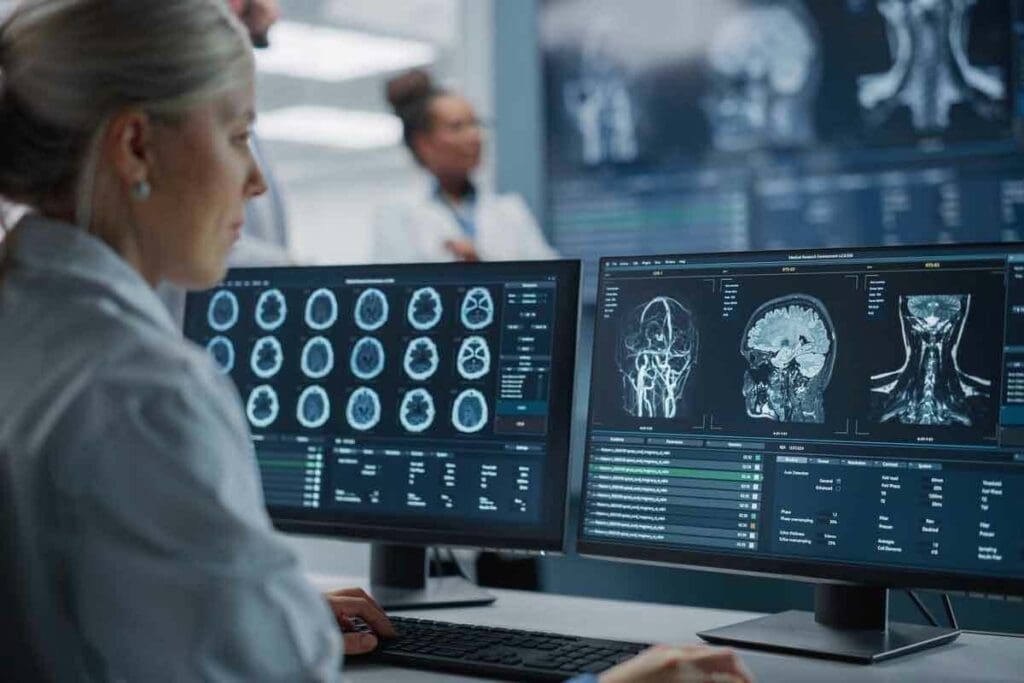
Getting CT scan results is a big moment for patients. At Liv Hospital, we make sure you get your results fast and accurately. We focus on your care and use the latest methods.how long do ct scans take to come back – Find out how long CT scan results take to come back and what they show.
A CT scan procedure usually takes less than an hour. You’ll wait about 24-48 hours for your CT scan results. But if it’s an emergency, you might get them sooner.
Most people get their results in 12 to 48 hours after the scan. This quick turnaround helps us give you the best care possible.
Key Takeaways
- CT scans are completed in under an hour.
- Results are typically available within 24-48 hours.
- Emergencies may expedite result delivery.
- Liv Hospital prioritizes rapid and reliable diagnosis.
- Patient care is thorough and backed by up-to-date protocols.
What Exactly Is a CT Scan and Why Is It Performed?
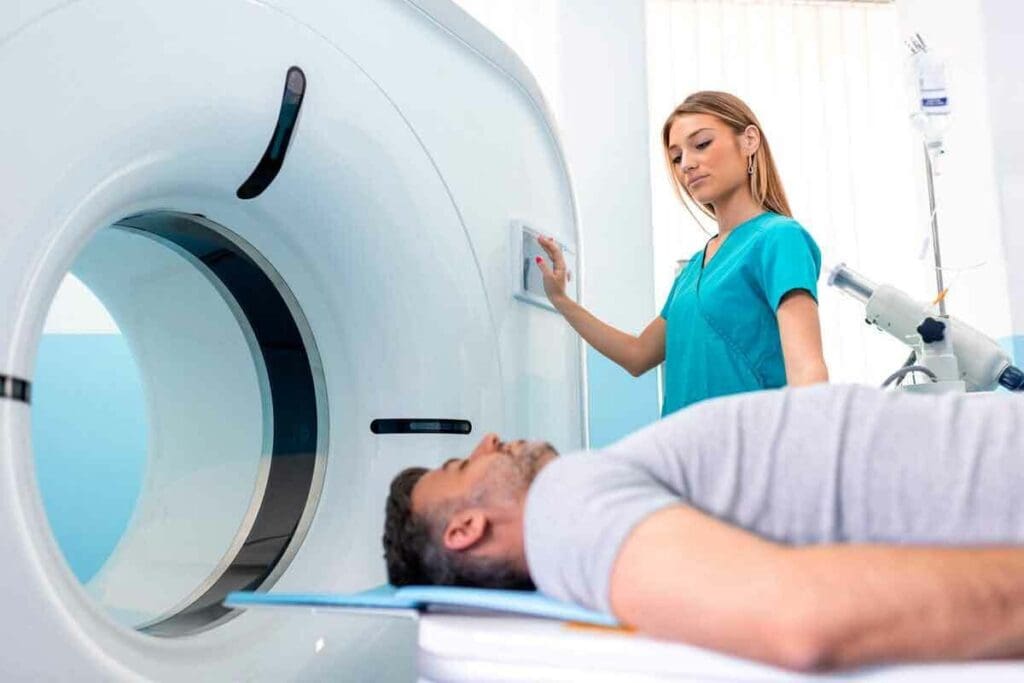
CT scans are a big step forward in medical imaging. They let doctors see inside the body in detail. This helps them find and treat many health problems, like injuries, cancers, and heart diseases.
The Technology Behind Computed Tomography
CT scans mix X-rays and computer tech to show the body’s inside parts clearly. The patient lies on a table that moves into a CT scanner. The scanner spins around the body, taking X-ray pictures from different sides.
Then, a computer puts these pictures together to show detailed views of the body’s inside.
Common Medical Conditions Requiring CT Scans
CT scans help find and track many health issues. They’re key in emergency rooms to check for injuries like bleeding inside or broken bones. They’re also vital in cancer care to spot and track tumors.
Differences Between CT Scans and Other Imaging Tests
CT scans show more than X-rays, which only give two-dimensional views. They’re quicker than MRI scans, making them better for urgent cases. Unlike ultrasound, which uses sound waves, CT scans are better for some diagnoses.
How Long Do CT Scans Take to Come Back: Standard Timeframes
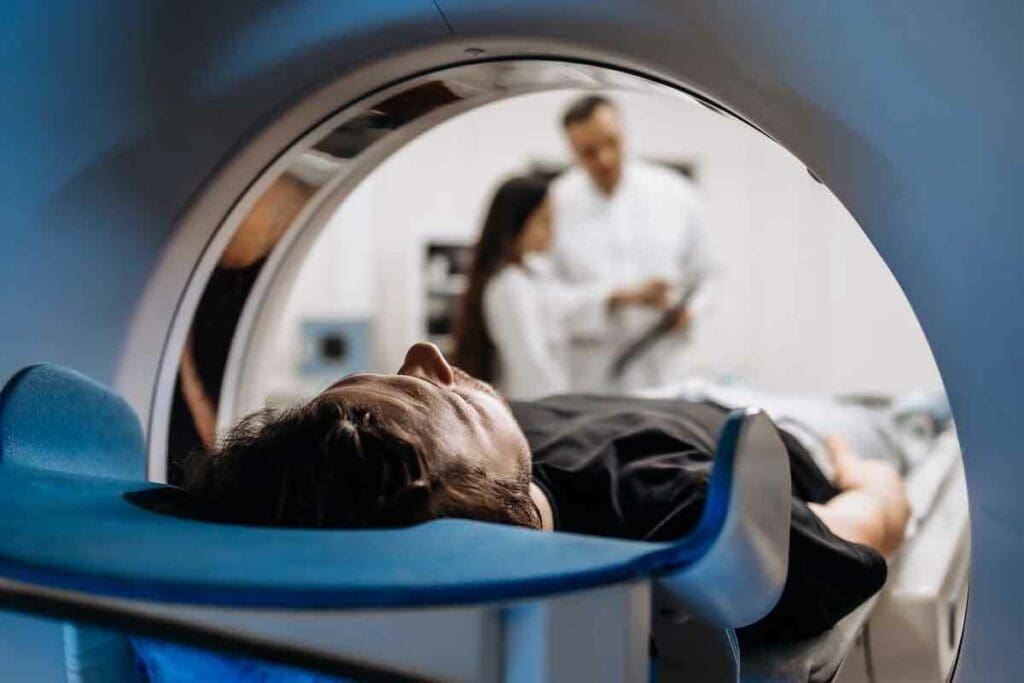
Waiting for CT scan results can be stressful. Knowing how long it usually takes can help ease that stress. The time it takes can vary, depending on several factors.
The 12-48 Hour Standard for Most Results
Most people get their CT scan results in 12 to 48 hours. This gives radiologists enough time to study the images and write a detailed report. A study in the Journal of the American College of Radiology found that most radiology departments aim to deliver results within 24 hours.
Same-Day Results: When They’re Possible
In emergencies or critical cases, results can come back the same day. “In urgent cases, radiology departments prioritize image interpretation, enabling healthcare providers to make timely decisions.” This quick process helps patients get the care they need fast.
Extended Waiting Periods: When and Why They Occur
While most get results in 48 hours, some may wait longer. Delays can happen due to complex images, the need for comparisons with previous scans, or the radiology department’s workload. If you’re waiting longer, ask your healthcare provider for updates.
Knowing the usual timeframes and what can cause delays helps patients. It lets them manage their anxiety and stay informed about their care.
Emergency CT Scan Result Delivery
Getting CT scan results quickly is key in emergencies. Every minute is precious, and fast CT scan processing is vital for patient care.
The One-Hour Window for Critical Conditions
For severe trauma or stroke, CT scan results are a top priority. Emergency departments aim to deliver these results within a one-hour window to act fast.
This quick process is essential. It helps doctors make quick decisions based on the scan results.
Stroke and Trauma Protocols
Stroke and trauma cases have special protocols for quick CT scan results. For example, stroke protocols often involve immediate CT scans to determine the cause of symptoms, allowing for the timely administration of life-saving treatments.
Trauma protocols also need fast CT scan results to see the extent of injuries. This info is key for deciding on surgery and other treatments.
How Emergency Departments Expedite Results
Emergency departments use several ways to speed up CT scan results. These include:
- Prioritizing critical cases
- Utilizing advanced imaging technologies
- Maintaining a team of on-call radiologists
- Implementing efficient image processing and reporting systems
| Strategy | Description | Benefit |
| Prioritizing Critical Cases | CT scans for critical conditions are processed first | Timely intervention for life-threatening conditions |
| Advanced Imaging Technologies | Use of the latest CT scan technology for faster image acquisition | Rapid image acquisition and processing |
| On-Call Radiologists | Availability of radiologists 24/7 for immediate interpretation | Quick interpretation and reporting |
By using these strategies, emergency departments can cut down the time to deliver CT scan results. This helps improve patient outcomes in urgent situations.
The Complete Journey of Your CT Scan Results
After a CT scan is done, a series of steps happens to get your results to you. These steps include image processing and talking to you about your health.
From Scan Completion to Image Processing
Once the CT scan is over, the images go to a computer for processing. Here, the raw data turns into detailed images for a radiologist to look at. Advanced software helps make these images clearer, helping doctors make better diagnoses.
Radiologist Interpretation and Report Generation
A radiologist then looks at these images for any signs of disease. They write a detailed report with their findings and what steps to take next.
- The radiologist checks the images for any disease or injury signs.
- A detailed report is made, including findings and next steps.
- The report is then sent to your ordering doctor.
Result Delivery to Your Ordering Physician
Once the radiologist’s report is ready, it goes to the doctor who ordered the CT scan. This doctor will look over the results and decide what to do next for your care.
| Step | Responsible Party | Action |
| Image Processing | Radiology Department | Reconstruct images from raw data |
| Radiologist Interpretation | Radiologist | Analyze images, generate a report |
| Result Delivery | Radiology Department | Send report to ordering physician |
Final Communication to You as the Patient
Lastly, your doctor talks to you about the results. This might be a meeting to go over what was found and what to do next.
The whole process, from starting the scan to getting your results, aims to give you accurate and timely health info.
Key Factors That Influence CT Scan Result Timing
Many things affect how long it takes to get CT scan results. Each case is different, so timing varies a lot.
Medical Urgency and Case Prioritization
When a medical emergency happens, CT scan results are a top priority. The radiology team works fast to get these results. This helps doctors make quick decisions.
Examples of high-priority cases include:
- Trauma patients
- Stroke victims
- Patients with severe internal injuries
Complexity of the Images and Findings
How complex the CT scan images are affects the timing. Cases that are more complex need more time for analysis.
Factors contributing to complexity include:
- Multiple injuries or conditions
- Unusual or rare medical conditions
- Need for additional imaging or comparisons
Radiologist Workload and Availability
The amount of work radiologists have also affects result timing. Busy departments with lots of scans take longer.
Key factors affecting radiologist workload include:
- Number of scans to be interpreted
- Complexity of cases
- Availability of specialist radiologists
Need for Comparison With Previous Imaging
Comparing new CT scans with old ones is often needed. This helps doctors make better plans. It also takes more time.
Comparison reasons include:
- Monitoring disease progression
- Assessing treatment effectiveness
- Detecting subtle changes over time
Hospital-Specific Factors Affecting Result Times
The time it takes to get CT scan results can change a lot based on the hospital. Each hospital has its own unique factors that can affect how fast results are ready.
High-Volume vs. Low-Volume Facilities
Hospitals with lots of patients usually have more imaging services. These high-volume facilities have more radiologists and technicians. This means they can often give results faster.
For example, big city hospitals work all day and night to get results quickly. But smaller hospitals might take longer because they have fewer people and resources.
Academic vs. Community Hospital Differences
The type of hospital also affects how fast you get your CT scan results. Academic hospitals, which are linked to medical schools, might take longer. This is because they handle more complex cases and involve radiology residents in the process.
Community hospitals, though they might not have as many resources, can be faster. They focus on common medical issues and aim to give quick care.
Liv Hospital’s Advanced Protocols for Rapid Results
Liv Hospital is a great example of a place that works hard to get CT scan results fast. They use the latest technology and make their workflow efficient. This way, they can give quick results without losing accuracy.
They have a team of radiologists ready to work at any time. They also use automated systems to make image processing faster. This focus on speed helps patients get their results quickly.
Knowing about these hospital-specific factors can help everyone understand when to expect CT scan results. By picking hospitals with advanced technology and lots of imaging services, patients might get their results faster.
How Results Are Typically Communicated to Patients
After a CT scan, patients get their results in different ways. Healthcare providers pick the method based on how urgent and important the findings are.
The Physician Consultation Process
Getting results from a doctor is common. The doctor talks about the scan’s findings, answers questions, and explains what to do next.
This way, patients understand their results better. The doctor considers the patient’s health history and current situation.
Digital Patient Portals and Electronic Access
Many places offer digital patient portals. These let patients see their scan results online. They also have educational materials and ways to talk to doctors.
Digital portals make it easy for patients to stay involved in their care.
Phone Notification Protocols
For urgent results, doctors call patients right away. This ensures they get news quickly, when it matters most.
After a call, patients usually get a detailed report or talk to their doctor more.
Written Report Delivery Methods
Sometimes, patients get their results in a written report. This can be by mail or through a patient portal.
Reports are a keepsake of the results. They’re handy for looking back or sharing with other doctors.
| Communication Method | Typical Use Case | Advantages |
| Physician Consultation | Detailed explanation of results | Personalized, interactive |
| Digital Patient Portals | Convenient access to results | Accessible, includes additional resources |
| Phone Notifications | Urgent or critical results | Timely, direct communication |
| Written Reports | Permanent record of results | Provides a hard copy, useful for future reference |
Understanding Your CT Scan Report Content
It’s key to understand your CT scan report to make smart health choices. This report details the results of your imaging test. It gives insights into your health condition.
A radiologist writes the report after looking at your CT scan images. Knowing the report’s parts helps you understand the findings and their meanings.
Navigating Technical Terminology
CT scan reports use terms you might not know. Words like “attenuation,” “contrast enhancement,” and “artifact” are common. Attenuation is how much X-rays are absorbed by body tissues.
- Key Terms:Hyperdense: Areas that show up brighter on the scan, meaning denser tissue.
- Hypodense: Areas that look darker, showing less dense tissue or possible issues.
- Isodense: Tissues that match the density of the surrounding areas.
Differentiating Between Findings and Impressions
The “Findings” section lists what the radiologist saw on the images. The “Impressions” or “Conclusion” section sums up the key findings. It might give a diagnosis or suggest more tests.
For example, the Findings might show a lung nodule. The Impressions could say if it’s likely harmless or if more tests are needed.
Incidental Findings: What They Mean
Incidental findings are things not related to why you had the CT scan, but were found. They can be anything from harmless cysts to signs of past health issues.
Even though incidental findings can worry you, many are not serious. Your doctor will talk about their importance and what to do next if needed.
Knowing your CT scan report helps you talk better with your doctors. You can ask better questions and make choices based on what you know about your health.
Managing the Waiting Period Effectively
The waiting time for CT scan results can be very stressful for patients. It’s important to know how to handle this time well. This helps reduce stress and prepares you for what comes next.
Practical Strategies to Reduce Anxiety
Staying busy can help manage anxiety during the wait. Work, hobbies, or time with family can take your mind off it. Also, deep breathing, meditation, or yoga can lower stress.
When and How to Follow Up About Results
It’s important to check in with your doctor about your CT scan results. The time you wait can depend on how urgent your case is. For non-urgent cases, a phone call or online check-in is fine.
Ask about when you can expect your results and who to talk to if you have questions.
Setting Realistic Expectations
It’s important to have realistic hopes when waiting for CT scan results. Knowing that results times can vary helps. Keeping in touch with your doctor and understanding the process can help a lot.
FAQ
How long does it take to get CT scan results?
It usually takes 12 to 48 hours to get CT scan results. Bu, it can take longer if the case is complex or urgent.
Can I get my CT scan results on the same day?
Yes, you might get results the same day if it’s an emergency. The radiology team works fast in these cases.
What factors influence the timing of CT scan results?
Several things can affect how long it takes to get CT scan results. These include how urgent the case is, the complexity of the images, and the radiologist’s workload.
How are CT scan results communicated to patients?
Patients usually get their CT scan results from a doctor. They can also get them through digital portals, phone calls, or written reports.
How can I understand my CT scan report?
To understand your CT scan report, start by learning the technical terms. It’s also important to know the difference between findings and impressions. A healthcare professional can help you with this.
What should I do while waiting for my CT scan results?
While waiting, try to stay calm and set realistic expectations. You can also follow up with your doctor if you have questions or concerns.
How do emergency departments expedite CT scan results?
Emergency departments work quickly to get CT scan results. They have special protocols for urgent cases, like strokes and traumas. This ensures fast interpretation by radiologists.
Can the type of hospital affect the timing of CT scan results?
Yes, the type of hospital can impact how fast you get your CT scan results. Some hospitals, like Liv Hospital, are known for their quick results.
How long does it take for a radiologist to interpret a CT scan?
The time it takes for a radiologist to review a CT scan varies. It depends on the complexity of the images and the radiologist’s workload. But it’s usually part of the 12-48 hour wait time.
Are CT scan results available through digital patient portals?
Yes, many healthcare providers offer digital patient portals. These allow patients to view their CT scan results online. It’s a convenient and secure way to get your results.
References
- National Cancer Institute. (2025). Computed Tomography (CT) Scans and Cancer Fact Sheet. https://www.cancer.gov/about-cancer/diagnosis-staging/ct-scans-fact-sheet



